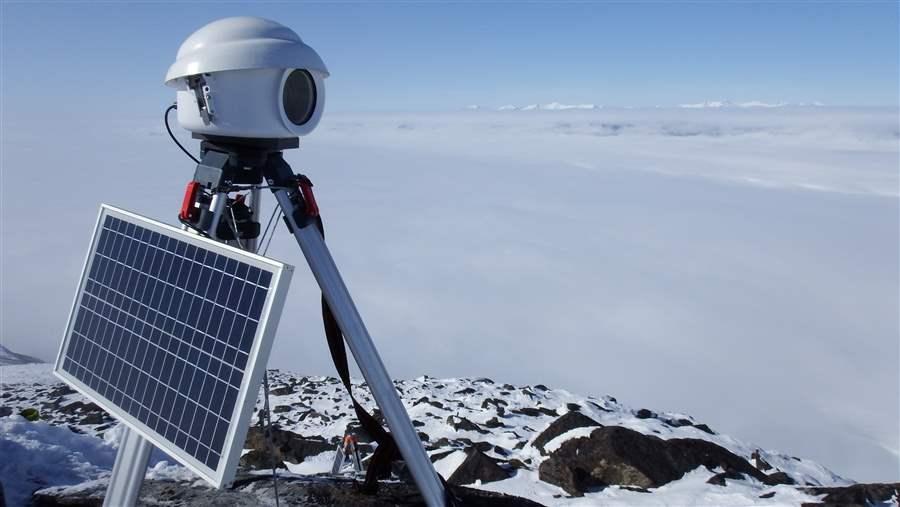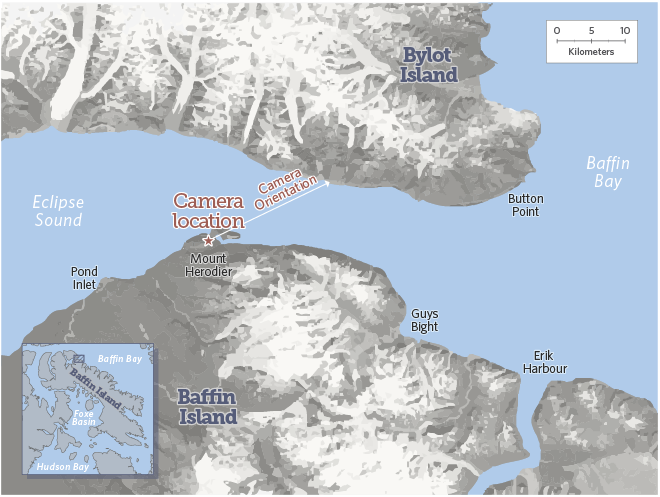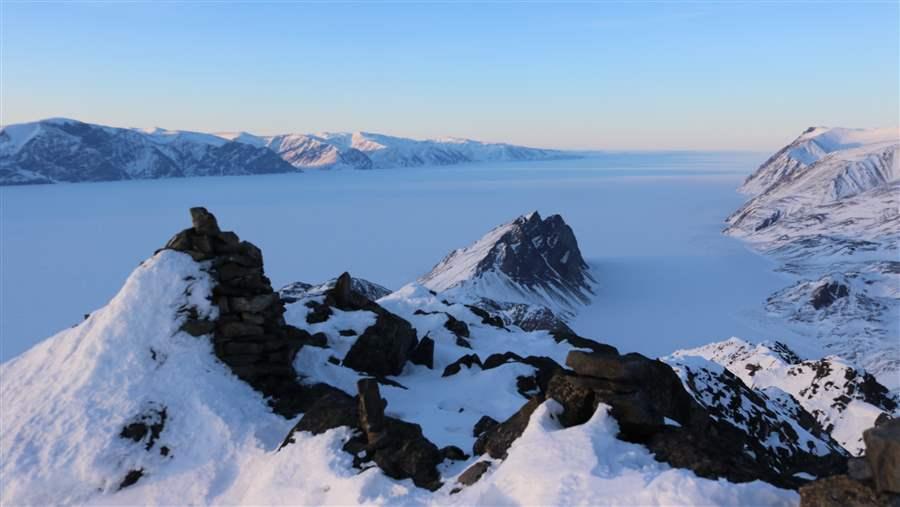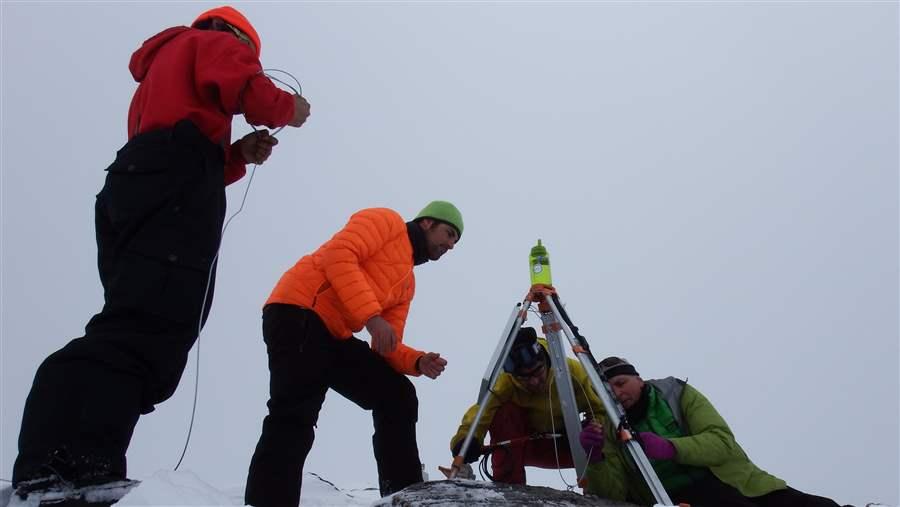Dramatic Arctic Sea Ice Changes Captured on Cameras
Snapshots provide critical data on shipping impacts in Nunavut’s Eclipse Sound
 © Jeremy Davies
© Jeremy DaviesThe cameras installed above Eclipse Sound to record changes in sea ice are protected by weatherproof housings and charged by solar panels.
For the second summer in a row, cameras located on peaks above Nunavut’s Eclipse Sound in the Canadian Arctic are recording the seasonal breakup of floe edge ice—ice attached to the shore. The data from these cameras will help answer key questions about how a proposal by the nearby Mary River iron ore mine to use icebreakers to create a longer shipping season could affect this delicate ecosystem. Hearings to assess potential environmental impacts are scheduled for this fall.
“It’s really important to get a good baseline before any icebreaking starts,” said Chris Debicki, a consultant and Nunavut projects director for Pew’s Oceans North Canada initiative and a member of the team that installed the cameras in early May. “One year of data is not enough to understand what’s happening at the floe edge.”
This project is led by Professor Dany Dumont, Université du Québec à Rimouski, Institut des sciences de la mer de Rimouski (ISMER), with support from Oceans North Canada.
Alex Ootoowak, a hunter and guide from the village of Pond Inlet, and his teenage son, Qanirq Ootoowak, provided crucial assistance in installing the cameras in both years. “We relied on traditional knowledge to know where to set up the cameras,” Debicki said. “Hunters have an excellent sense of where cracks in the sea ice leading to the floe edge develop.”

Data collected in 2015 showed that the floe edge is a “resilient platform and takes a long time to break up,” he said.
Inuit and others from Pond Inlet regularly travel to the floe edge during June’s hunting season and want to ensure that the proposed icebreakers won’t damage it or harm the habitat for the ringed seals that give birth in dens on the ice. “That’s the number one concern from our perspective,” Debicki said. “Seals are a critical part of this ecosystem and a primary food source for polar bears and people.”
Last year, two cameras snapped photos every 30 minutes from mid-May through mid-August and provided a comprehensive look at sea ice changes, including the breakup of the floe edge July 18. At the end of the summer, a helicopter was used to retrieve one camera and its data, while the other was picked up by a Students on Ice ship. The project’s research partners at the Institute of Marine Science at the Université du Québec à Rimouski analyzed the data.
 © Oceans North Canada
© Oceans North CanadaIce and visibility conditions are recorded by time-lapse photography, and the images are uploaded to a Université du Québec à Rimouski website.
This year, in addition to reinstalling two solar-powered cameras at the same sites used last summer, the five-member team added a third device on the opposite side of the sound to increase visual coverage. Team members also mounted a fourth camera on top of Mount Herodier, about 30 kilometres (20 miles) east of Pond Inlet that is broadcasting a photo every two hours to a community website. The feed has been very popular with residents.
“It’s a very useful weather tool,” Debicki said. “It can assist hunters and the community in assessing the general safety of the floe edge.”
The only technical problem has been that camera lenses will sometimes ice up, blocking the visual data until the warmth of the sun can melt it away. “Overall, they have worked wonderfully,” Debicki said.
 © Alex Ootoowak
© Alex OotoowakSetting up the cameras required many hands and a bit of ingenuity. A water bottle was used to make sure the tripod was level before anchoring it in place.
The Mary River mine sits on one of the world’s largest high-grade iron ore deposits, and its owner, Baffinland, wants to extend its shipping season to European steel mills into winter and spring. This would require intensive, unprecedented icebreaking through the sound. Local residents want the mine to succeed, but they also want to protect the biologically productive ecosystem and their cultural and economic connection to it.
Ships from the mine must also travel through Lancaster Sound, a region that the Canadian government has pledged to protect by creating a national marine conservation area. Though the plan has not been finalized, a decision by Shell Canada in June to give up its oil and gas exploration permits at the eastern edge of Lancaster Sound has paved the way for a larger marine park. And negotiations are underway with Inuit to determine its boundaries.
Scott Highleyman oversees marine campaigns in Canada, Greenland, and international waters that promote science and community-based conservation of the Arctic Ocean and the welfare of indigenous residents who rely on this ecosystem.






